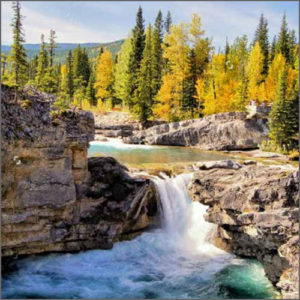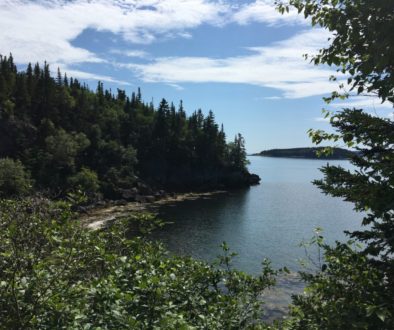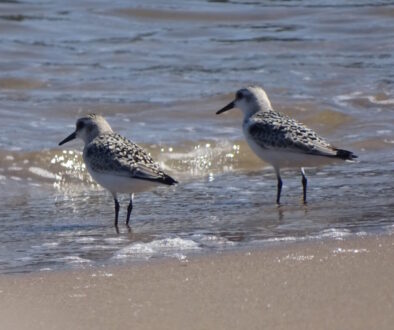Canada lags the world in land protection.
New Brunswick needs to step up and commit to new protected areas by 2020
Fredericton – In its latest annual report on the state of protected areas in Canada, the Canadian Parks and Wilderness Society (CPAWS) is calling upon New Brunswick to step up efforts to protect more land by 2020. CPAWS’ 2017 report “From Laggard to Leader? Canada’s renewed focus on protecting nature could deliver results” calls Canada out for ranking last among G7 countries in the percentage of land and freshwater protected for conservation purposes, and encourages governments to conserve Canada’s natural heritage, starting by delivering on their international commitment. New Brunswick ranks 2nd to last among the Canadian provinces and territories.
 With only 10.6% of its landscape currently protected, Canada lags behind the global average of 15%, and also trails other large countries such as China, Brazil, and Australia. In 2010, as part of a worldwide effort to stem the tide of biodiversity loss, Canada committed under the United Nations Convention on Biological Diversity to protecting at least 17%of land and inland waters by 2020 and improving the quality of their protected area systems to more effectively conserve nature.
With only 10.6% of its landscape currently protected, Canada lags behind the global average of 15%, and also trails other large countries such as China, Brazil, and Australia. In 2010, as part of a worldwide effort to stem the tide of biodiversity loss, Canada committed under the United Nations Convention on Biological Diversity to protecting at least 17%of land and inland waters by 2020 and improving the quality of their protected area systems to more effectively conserve nature.
The report recognizes that Canadian governments are finally starting to take this commitment seriously after years of inaction. In February 2017, federal, provincial and territorial Ministers responsible for parks and protected areas publicly announced their commitment to work together to achieve this target. A new Pathway to 2020 process was initiated, and the Indigenous Circle of Experts and National Advisory Panel appointed to advise Ministers on this work.
“In New Brunswick, there has been no progress on working towards the national protected areas targets,” says Roberta Clowater, Executive Director of CPAWS New Brunswick. “There are steps that can be taken by the province immediately to help Canada reach our goals, including setting a target to increase protected areas, developing an action plan to 2020 and beyond, and protecting the Restigouche Wilderness Waterway.”
“With less than 3 years to fulfill our 2020 commitment, we need to get going now,” adds Hébert-Daly. “In the report we identify places across Canada where a considerable amount of work has already been done on proposed protected areas. By acting now to permanently protect these sites, while also planning for what’s needed to conserve nature in the long term, Canada has a chance to move from laggard to leader.”
Clowater adds, “The New Brunswick government could create a world-class wilderness tourism destination by establishing the Restigouche Wilderness Waterway – a wide protected corridor along the river, on Crown land. Currently, 97% of the New Brunswick portion of the Restigouche watershed is open to development, and industrial development is eating away at the region’s wild forests and rivers year by year. By conserving this area’s special nature, promising ecotourism businesses could reliably promote a quality wilderness destination to nature-seeking tourists around the world.”
Protected areas are important to conserve wildlife and wilderness, as well as provide clean air and water for all Canadians, store carbon, and play a major role in improving our health and well-being. They also make economic sense. Protected areas around the world generate US$600 billion per year in direct spending, while costing less than US$10 billion per year to manage.
For over 50 years, CPAWS has been working with all levels of government, and other partners across the country to protect more of Canada’s public lands. As the only nationwide charity dedicated to the protection of our public lands and water, we are uniquely positioned to help governments protect what nature really needs.
For interviews, contact: Roberta Clowater, rclowater@cpaws.org; 506-452-9902
Read the full report. http://cpaws.org/uploads/CPAWS-Parks-Report-2017.pdf
Read the Executive Summary with recommendations. http://cpaws.org/uploads/CPAWS-Parks-Report-Executive-Summary-2017.pdf


